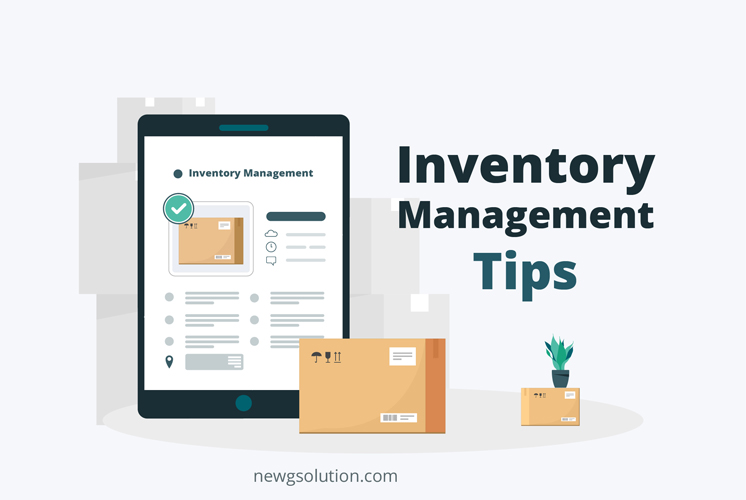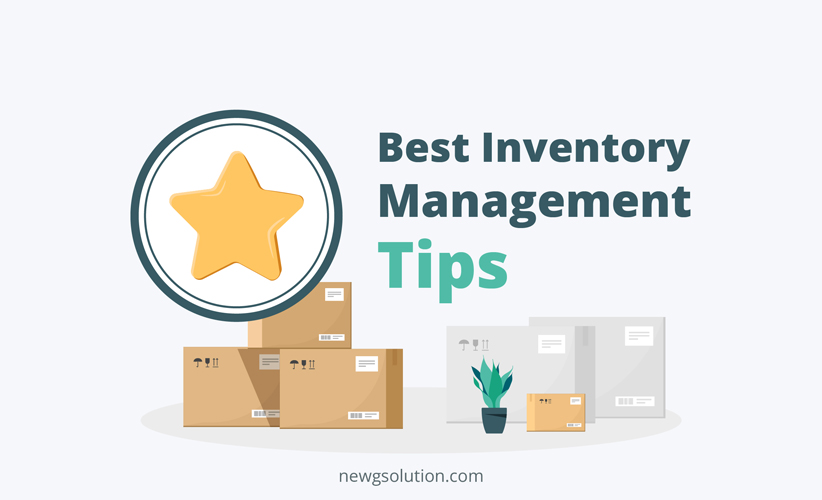The Top Effective Inventory Management Tips
Inventory Management
LAST UPDATE: MAY 6, 2023
8 minutes reading
You need to take stock of your company frequently to make sure it’s heading in the right direction. Inventory control is a crucial component of any successful organization.
How has inventory management worked for your small business? Have you ever lacked access to the proper resources just when you needed them? Did you suffer financial losses as a result of stockouts? Or did you make a loss because you have too much stock?
In this post, we’ll go over some of the finest Inventory Management Tips for managing your stock, as well as explain what to look for in inventory management software to make things easier.
Cart Abandonment: What Is It?
Abandoned shopping carts occur when prospective buyers begin the checkout process for online purchases but abandon them before making a final decision. The term “abandoned” refers to any item that is added to the shopping cart but is never actually purchased by the customer.
Best Inventory Management Techniques
Following are some inventory management techniques used by various businesses:
- Improve your predictions. Effective inventory management depends on accurate forecasting. Your estimated sales statistics should be based on elements such as previous sales numbers (if you sell using Square, refer to your interactive Dashboard for this information), market trends, expected growth, the market, promotions, marketing activities, etc.
- Make use of the FIFO method (first in, first out). Products should be marketed in the same chronological order as their acquisition or production. This is particularly crucial for perishable items such as food, flowers, and cosmetics. But, this is also a good idea for non-perishable things, as anything left out for too long may get damaged or otherwise out of date and unsellable. The ideal technique to implement FIFO in a storeroom or warehouse is to add new goods from the rear so that the oldest products are in front.
- Check your supply. Even if you have inventory management software, you must frequently count your inventory to ensure that what you have matches what you believe you have. Companies employ a variety of procedures, such as a yearly, year-end physical inventory in which every item is counted and constant spot-checking, which is particularly effective for items with rapid turnover or stocking concerns.
- Cloud inventory management software. Seek software with real-time sales insights.
- Monitor your inventory levels at all times. Put a reliable system in place for keeping track of your inventory, giving priority to the most expensive goods. By performing the majority of the work for you, effective inventory control software saves you time and money.
- Remember your ABCs. By categorizing inventory goods into A, B, and C categories, many firms find it useful to have more stringent inventory management rules over higher-value commodities.
10 Best Inventory Management Tips
Here are the top 10 Inventory Management Tips to boost profitability and cash flow:
1. Set Priorities For Your Stock
You may better identify which things you need to order more regularly and which are crucial to your company but might be more expensive and take longer to arrive by classifying your inventory into priority groups. Typically, experts recommend classifying your inventory into A, B, and C groupings. Items in the A group are more expensive and you require fewer of them. Products in the C category are less expensive and move quickly. The B group consists of modestly priced things that move out of the store more slowly than C items but faster than A items.
2. Keep Track Of All Product Data
Keep track of the product details for each item in your inventory. This data should include SKUs, barcode information, suppliers, countries of origin, and lot numbers. You may also wish to monitor the pricing of each item over time so that you are aware of price-changing factors such as scarcity and seasonality.
3. Do An Inventory Checkup
Some businesses conduct a thorough count once a year. Some conduct spot checks on their most popular items on a monthly, weekly, or even daily basis. Numerous people carry out each of the aforementioned actions. Make it a point to physically count your inventory regularly, regardless of how frequently you do it, to confirm that it corresponds to what you believe you have.
4. Evaluate The Performance Of Suppliers
Unreliable suppliers might damage your inventory. It’s time to take action if a supplier is routinely late with deliveries or frequently falls short on orders. Address the difficulties with your provider and determine the nature of the issue. Be prepared to switch partners, or deal with uncertain stock levels and the possibility of running out of inventory as a result.
5. Follow The 80/20 Rule When It Comes To Inventory
Generally speaking, 20% of your stock accounts for 80% of your profits. Give this 20% of items top priority in inventory management. You should comprehend the entire sales lifetime of these things, including how many you sell every week or month, and regularly monitor them. These are the goods that provide the most revenue; don’t neglect their management.
6. Be Consistent In How You Receive Stock
It may seem obvious to ensure that incoming inventory is processed, but do you have a standard procedure that everyone adheres to, or does each person receiving and processing incoming stock perform the task differently? Slight variations in how new inventory is received could leave you perplexed at the end of the month or year, asking why your figures don’t match your purchase orders. Ensure that all employees that receive inventory do so in the same manner and that all boxes are verified, received, unpacked, accurately counted, and checked for accuracy.
7. Monitor Sales
Again, this seems like a no-brainer, but it goes beyond merely totaling up sales at the end of the day. You should be aware of and update your inventory totals daily, what things you sold, and how many. But beyond that, you’ll need to analyze this data. Do you know when particular things sell more quickly or less frequently? Is it seasonal? Is there a particular day of the week when you sell particular products? Do certain products virtually always sell in tandem? Keeping your inventory under control requires understanding not only your sales totals but also the larger picture of how goods sell.
8. Order Replenishments Yourself
Some sellers will reshuffle your inventory. On the surface, this appears to be a positive development: you save staff and time by outsourcing the management of at least some of your items. But, keep in mind that your merchants do not share your priorities. They are looking to shift their things, whereas you are looking to stock the most profitable items for your firm. Examine inventory and order restocks of all your items.
9. Spend Money On Inventory Management Software
If your business is small enough, you may manage the first eight items on this list manually using spreadsheets and notes. Yet, if your company expands, you will need to devote more time to inventory management than to other aspects of the company or run the risk of having an unmanageable amount of stock. These chores are simplified by good inventory management software. Before selecting a software solution, ensure that you have a clear understanding of your needs, that it provides the insights that are crucial to your organization, and that it is simple to use.
10. Make Use Of Technology That Integrates Effectively
The only technology that can assist you in managing goods is inventory management software. Mobile scanners and POS solutions can help you stay on target. When investing in technology, give priority to interoperable systems. It’s not the end of the world if your POS system can’t interact with your inventory management software, but it could take you longer to move the data from one system to another, leading to inaccurate inventory counts.
How Can We Reduce the Cart Abandonment Rate?
A client connection worth pursuing has been abandoned in the shopping cart. Here you can learn a variety of strategies for retaining the interest of your online shoppers, decreasing the rate at which they abandon their carts, and attracting them again through cart recovery.
Although the Shopify ecommerce platform is mentioned, these recommendations can be used by any ecommerce site.
Guidelines to decrease the likelihood of a shopping cart being abandoned include:
- Streamlining the purchasing procedure
- User experience testing
- Putting in place distinct calls-to-action
- Giving Rewards for Signing Up
- Getting in touch with shopping cart abandoners
- Providing buyers with several different payment alternatives
- Offering free shipping
Wrapping up
While dealing with inventory during times of uncertainty, it helps to keep in mind these guidelines. They will assist you in keeping your vital, long-term consumer ties.
But !! are you seeking inventory management software? New G Solution’s inventory management software is among the best and most user-friendly. So, you can concentrate on growing your company.




Recent Comments